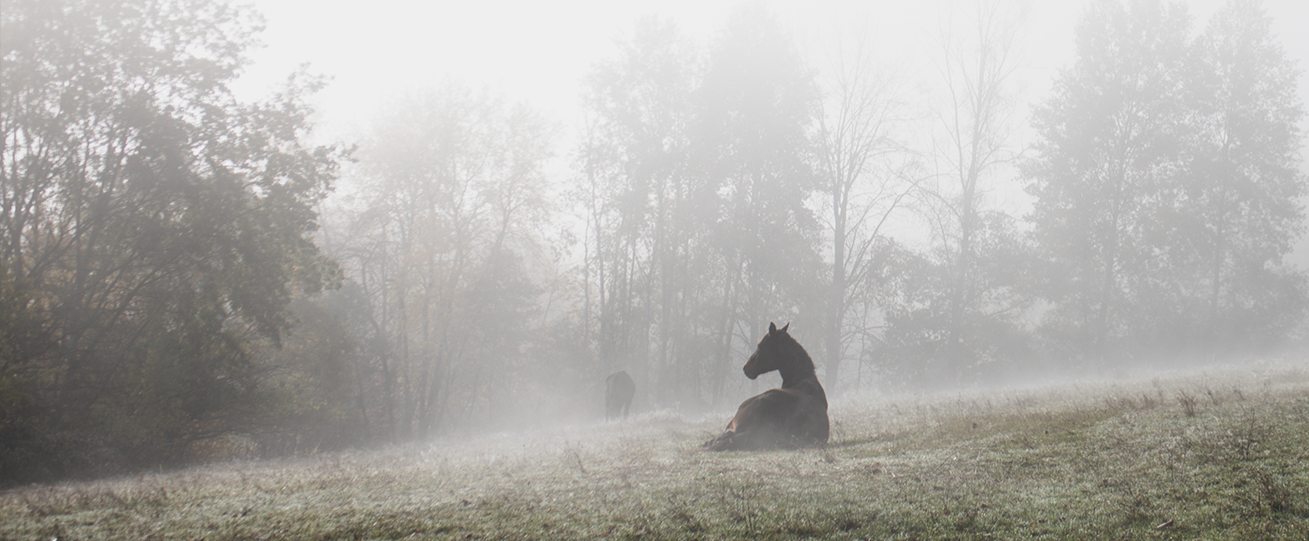How exactly do blocked sebaceous glands occur in horses?
In order to treat blocked or inflamed sebaceous glands in horses, it is worth understanding how blocked sebaceous glands arise in the first place. So let's first take a look at their function and structure :
Sebaceous glands are small, specialized skin glands in horses that secrete an oily substance. These glands are located mainly in the skin along the back , on the head and in the area of the mane and tail .
The sebum forms a protective layer on the horse's skin and coat to make it water-repellent and protect it from external influences . Regular secretion of sebum keeps the skin supple and the coat shiny , which is essential for the horse's health and well-being.

Although clogged sebaceous glands and pimples are related, they are not exactly the same thing.
Difference:
-
Clogged sebaceous glands :
When the horse's sebaceous glands are blocked (by dirt, dead skin cells or pressure points), the sebum cannot drain properly. This leads to a build-up under the skin, a nodule or noticeable 'bump'. -
Pimple :
A pimple occurs when a blocked sebaceous gland becomes infected . Bacteria enter the blocked sebaceous gland, causing an inflammatory reaction. This then manifests itself as a pimple , which is often red, may be filled with pus, is painful and warm.
Similarities:
- Both conditions affect the sebaceous glands .
- Clogged sebaceous glands can lead to pimples if they become inflamed.
So how can blocked sebaceous glands in horses be treated?
First, it should be identified whether it is 'just' a blocked sebaceous gland, or whether it is already an inflamed sebaceous gland (inflammatory processes such as pimples or abscesses).
A blocked but not yet inflamed sebaceous gland can heal on its own with the right care and the use of a breathable and pressure-relieving saddle pad. As long as the following conditions are met, the use of the Alpaca saddle pad can be sufficient to enable healing without the need for a veterinarian:
- No signs of inflammation : There is no redness, heat, pain or pus formation at the affected area.
- Size stability : The blocked sebaceous gland remains the same size or slowly becomes smaller.
- No worsening : The affected area does not worsen over time.
Positive effects of the alpaca fleece saddle pad:
- Breathability : Alpaca fleece is known for its excellent temperature and moisture regulation, keeping the horse's skin dry and cool. This helps reduce excess sweating, which can lead to clogged sebaceous glands.
- Pressure relief : The soft padding reduces pressure on the skin and underlying sebaceous glands, which can aid their healing.
- Natural antibacterial properties : Alpaca wool has naturally antibacterial properties that can help prevent inflammation as long as the sebaceous gland is not yet inflamed.
- Climate regulation: The alpaca fleece has a temperature-balancing effect and has been proven to help clogged sebaceous glands heal significantly in just a few weeks , provided that no synthetic saddle pad is used during this phase.
When a veterinarian should be consulted:
If a blocked sebaceous gland shows signs of inflammation, such as:
- redness ,
- swelling ,
- pain when touched ,
- heat ,
- or pus formation ,
then the use of an alpaca fleece saddle pad alone is probably no longer sufficient. In these cases, a veterinarian should be consulted to treat a possible infection or to professionally drain the blocked gland.
You can find our alpaca saddle pad collection here . Do you need advice? Please contact us directly by phone or Whatsapp: +4915112351846.




